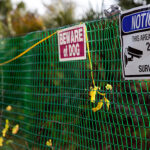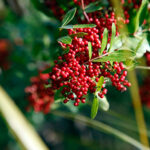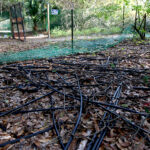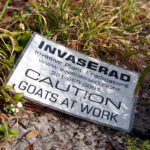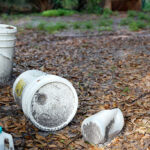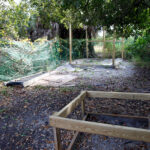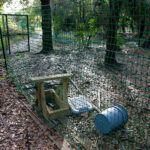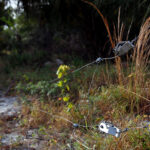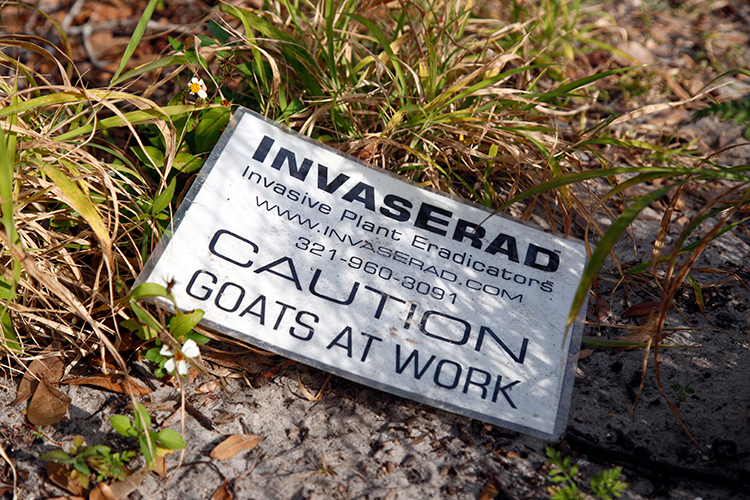
Indian River County’s year-long pilot project using a herd of foraging goats to devour invasive plants at two county conservation tracts has ended with only mixed success.
The animals, aided by their goatherd Steven Slatem, did a number on stands of Brazilian pepper and other exotic plants and grasses on a five-acre former citrus grove near CR 510 and on 26 acres of Cypress Bend Preserve north of Sebastian, according to Beth Powell, the county’s conservation lands manager. But Powell said the goats weren’t exactly cost effective.
And at least one resident who lives near Cypress Bend complained about plastic fencing and other equipment such as wooden lean-tos, tools and buckets left behind in the conservation area, a 59-acre former citrus grove that borders the St. Sebastian River and is an important burrowing site for protected gopher tortoises.
“It’s not in the public view,” Powell said of the debris. “It’s not really doing any harm.” She suggested the resident, who did not want their named used in this article, contact her office.
The $24,000 pilot project, which began in late 2019 and ended this past fall, was funded mostly by the county, plus a $7,500 grant from the Florida Fish and Wildlife Conservation Commission.
The county contracted with Slatem’s Melbourne-based company Invaserad to tend the goats and purchased plastic fencing to keep the animals in their designated areas.
But the goats had to be taken off-site each day after grazing and then brought back the next day to resume their work, and it just wasn’t cost-effective, Powell said.
“It does work, but I’d say it’s not economically feasible,” Powell said.
No more goats are in the picture right now, but Powell said, “It’s not something we’ve completely given up on.” She said the county would like to find a herder to bring some in to graze, uncompensated, in the future.
“It’s cost prohibitive to do it the way we were doing it,” Powell said. “There are mechanical things we could do – mowing, a tractor and bush hog – that are more economical.”
The county tried goats to clear the exotics because of concern that mechanical equipment might injure gopher tortoises or destroy their burrows.
Brazilian pepper, the chief invader on county lands and throughout Florida, was introduced as an ornamental plant in the late 1800s. It now covers more than 700,000 acres across the state, crowding out native vegetation and competing for food and water resources.
The battle to eradicate it in the area is ongoing, Powell said. Researchers from the University of Florida Institute of Food and Agricultural Sciences are releasing tiny bugs called thrips that feed on the stems and flowers of pepper trees without harming native plants.
Photos by Kaila Jones

